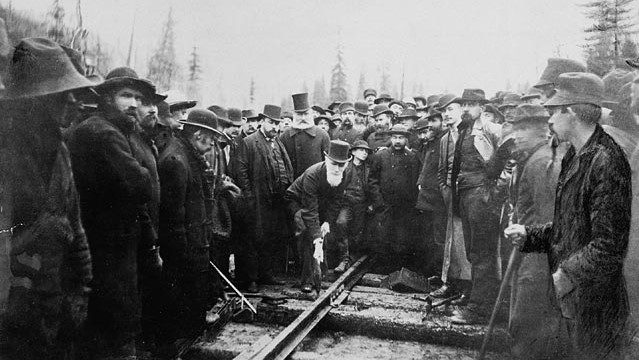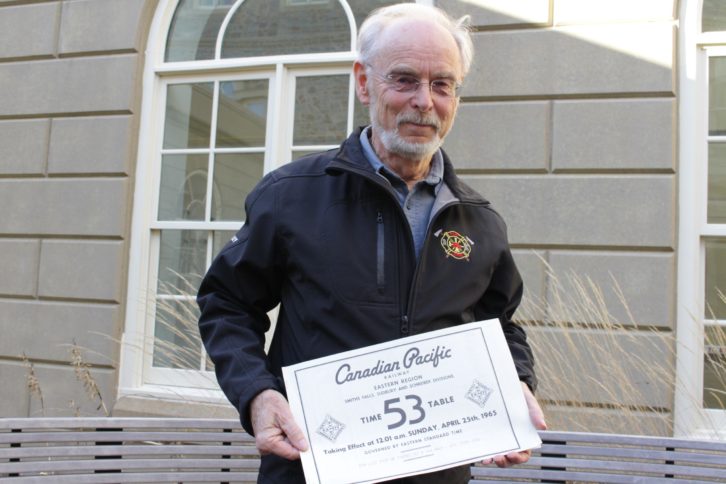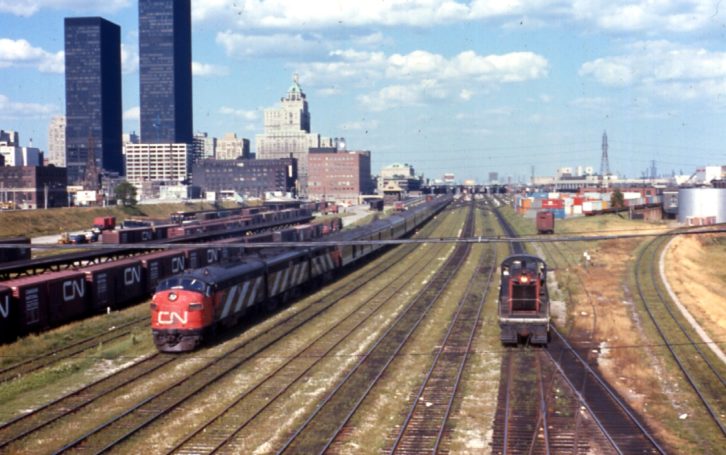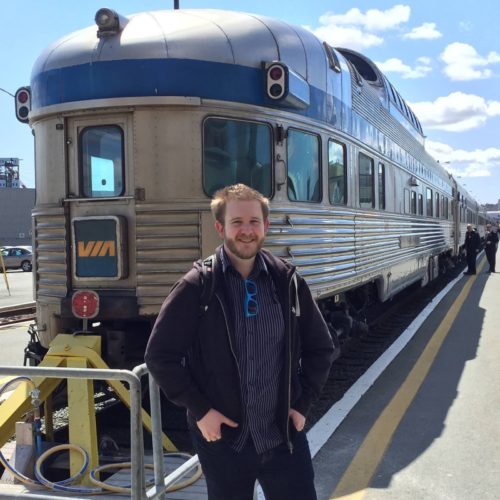From jewel to afterthought

Passenger rail was once the fastest, most glamorous way to travel across Canada. Those glory days are long gone.
Canada’s cross-country passenger trains were once the jewels of the country’s transportation system.
In the 1870s, the Intercolonial Railway was built between Halifax and Quebec. A decade later, on November 7, 1885 at Craigellachie, British Columbia, Canadian Pacific Railway director Donald Smith drove the “last spike” of the new CPR, captured forever in Alexander Ross’s iconic photo (above).
Steel rails now tied together the far-flung regions of Canada.
The railway was a means of connection – literally and metaphorically.
“Railways were the leading force drawing the country together in a geographic, physical sense,” said Bill Linley, an amateur historian who has written four books on the subject.
The train was now the fastest and safest way to travel. Before, going long distances in British North America meant dusty, uneven dirt roads, steamships or canoes.
Tim Hayman, secretary for the rail advocacy group Transport Action Atlantic, says that as you ride the train west, many communities you pass through were built around the track.
“They’re there because the train was there.”
Trains held so much influence that Sanford Fleming, whose Halifax estate became the Dingle park, would come up with the idea of standardizing time zones for the purpose of synchronizing train schedules across the country.

caption
Bill Linley holding an old CPR timetable from 1965.The time zones are still around, but the transcontinental trains are almost all gone and they’re now far from the fastest way to get anywhere.
Analysis by the MJ class at the University of King’s College found even after Via Rail added hours to the cross-country schedule a year ago, some still arrive at their final destinations hours after they are scheduled.
When passenger rail first started in Canada, a transcontinental trip from Montreal to Vancouver was scheduled to take nearly 140 hours via the CPR route through Calgary and Banff, not accounting for delays. The trip from Halifax to Montreal, essentially on the same route as used today, took 27 hours.
Popularity and technological advancements made rail faster. The time it took to get from Toronto to Vancouver on the Canadian National Railway route through Edmonton and Jasper decreased to 83 hours by 1957 – 70 if you took the fancy new Super Continental train.

caption
CN Super Continental is seen in Toronto in 1970.
Via Rail was born out out an attempt to stop the decline of passenger rail.
After the Second World War, passenger rail started to recede as the public’s preferred way to travel. Better roads and faster and safer planes cut into the business of CP, CN and a handful of smaller operators.
By 1977, revenues from passenger rail were insufficient and the railways were heavily subsidized by the federal government.
CN’s passenger rail services were spun off into a subsidiary called Via Rail. Later that year, it became a crown corporation in its own right. It took over CP’s services as well.
But the route network didn’t remain intact for long, with the first of a series of deep cuts to Via services coming in 1981 under the Liberal government of Pierre Trudeau. With no legislation or mandate or its own, Via was subject to the whims of the transport department and politics.

caption
Tim HaymanIn the mid ’80s, the Conservatives under Brian Mulroney restored some routes cut in 1981, but five years later they cut even more deeply, and the renowned Canadian, which started as the CPR’s flagship in the 1950s, was cut to running three days a week and moved to CN’s more northerly route.
Christopher Greenlaw is a Canadian historian. He says the 1990 round of cuts was beyond devastating for VIA Rail.
“It reduced the frequency of trains so much nationally that it really removed VIA from the public mind as an option for travel.”
Protests spread across Canada at rail stations. In Atlantic Canada, mayors and even provinces considered legal action.
Debate waged in the House of Commons over Via’s fate. Then Regina-Lumsden MP Les Benjamin told the House, “VIA Rail was finished before it even sold its first ticket; before the first train started to move it was $100 million in the hole. It started off with the deck stacked against it.”
VIA has since cut both the Canadian and the eastern Ocean route even further, and gradually increased the time the train takes, to account for freight traffic.
In 2011, the Canadian took 87 hours. Today, in 2019, it takes a shade more than 97 hours from Toronto Vancouver, if it’s on time. It can exceed 100 hours when running late.
Really only a remnant of the original passenger rail network remains though Via has of late enjoyed increased ridership and revenues in the most heavily travelled part of its network, the so-called “corridor” in southern Ontario and Quebec.
In that iconic last spike photo seen at the top of this story, directly over Donald Smith’s right shoulder, in the elegant top hat, is Sanford Fleming, who devised time zones and donated the land for the Dingle park. He surveyed the route for the Intercolonial Railway, and also identified a pass through the western mountains, for the CPR.
Only his East Coast route was used at the time, but in a bit of railway irony, his mountain route was chosen in the early-20th-century by one of the companies that later became CN. Today that CN line running through the Yellowhead Pass is the only place you can see a Via train traverse the mountains on the Alberta-B.C. boundary.
If you happen to know when it’s coming.


G
Garth Stevenson
E
Editor